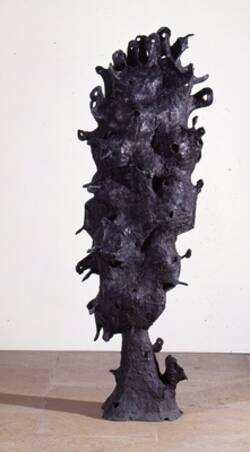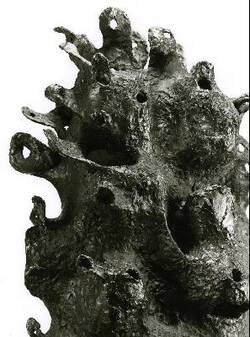The myth of Daphne from Ovid’s "Metamorphoses" has been a beloved subject in art for centuries: the god Apollo, struck by Cupid’s arrow of love, pursues the nymph Daphne. She however, hit by the opposite kind of Cupid’s arrow, flees. Soon she sees only one way to escape Apollo’s desire: she transforms herself into a laurel tree. Emil Cimiotti’s two-meter- tall bronze sculpture, which has roughly the shape of a laurel tree, shows the moment in which Daphne has completely assumed plant form. There is no longer any trace of human facial features. And yet the sculpture radiates a sense of movement and life: the rough surface is enlivened by a play of light and shadow, the mouthlike openings allow one to peer in and through the work, and the protruding, flat "leaves" are reminiscent of fingers.
Further Media
- Location & Dating
- 1960 Creation of the wax original in the studio in Stuttgart-Gablenberg 1961 Casting by master caster Heinzel, Stuttgart Art Academy
- Material & Technique
- Bronze (wax casting, unique piece), rough cast
- Dimenions
- H: 195.0 cm, W: 65.0 cm, D: 48.0 cm Weight: approx. 120 kg
- Museum
- Skulpturensammlung
- Inventory number
- ZV 4253


